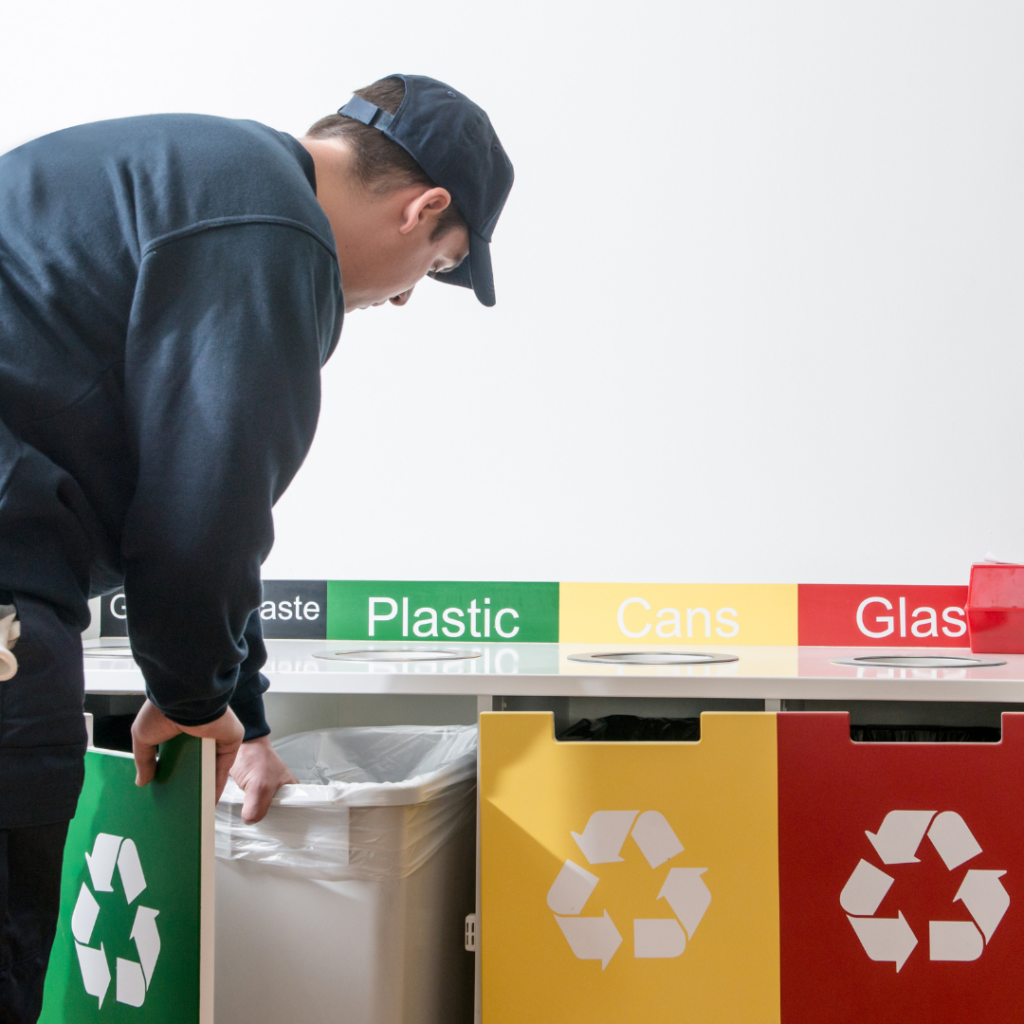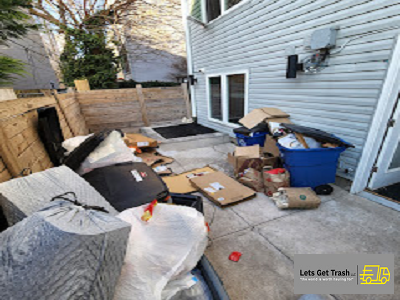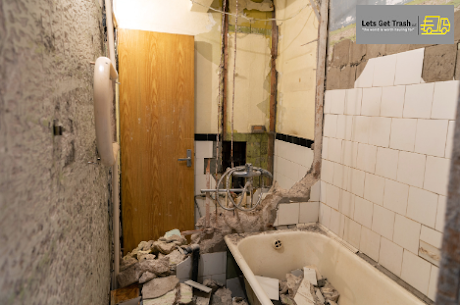Foreclosure Cleanouts: Managing Waste in Property Transitions
Foreclosure cleanouts represent a critical stage in property transitions, where abandoned or repossessed homes require thorough cleaning and waste management to prepare for resale or new occupancy. These cleanouts involve the removal of debris, unwanted belongings, and potentially hazardous materials left behind by previous occupants. Effective waste management practices are essential during foreclosure cleanouts to ensure the safety of workers, protect the environment, and comply with regulatory requirements. In this article, we explore the importance of foreclosure cleanouts and strategies for managing waste effectively in property transitions.
The Significance of Foreclosure Cleanouts
Foreclosure cleanouts play a crucial role in the real estate market, facilitating the transition of distressed properties from foreclosure to resale or new ownership. These cleanouts involve the removal of accumulated debris, personal belongings, furniture, appliances, and other items left behind by former occupants. Additionally, foreclosure properties may require remediation of hazardous materials, such as mold, asbestos, lead-based paint, or chemical residues, to ensure the safety and habitability of the premises.
By conducting thorough cleanouts, property owners, real estate agents, and investors can enhance the marketability and value of foreclosure properties, making them more attractive to prospective buyers or tenants. Moreover, foreclosure cleanouts contribute to neighborhood revitalization efforts by addressing blight, improving curb appeal, and restoring abandoned properties to productive use.

Effective Waste Management Strategies
Managing waste effectively during foreclosure cleanouts involves implementing a range of strategies to minimize environmental impact, promote safety, and comply with regulatory requirements. Some key strategies include:
Pre-Cleanout Assessment:
Conducting a comprehensive assessment of the property to identify potential hazards, such as mold, asbestos, or structural damage, that may require specialized handling or remediation.
Expanding on the importance of pre-cleanout assessment in foreclosure cleanouts, it’s crucial to highlight the multifaceted nature of this process and its role in ensuring safety, compliance, and efficiency. A thorough pre-cleanout assessment sets the foundation for effective waste management strategies, risk mitigation, and resource allocation, ultimately enhancing the overall success of the cleanout operation. Here’s a deeper exploration of the significance of pre-cleanout assessment:
Identifying Hazardous Materials
One of the primary objectives of pre-cleanout assessment is to identify and address potential hazards within the property. This includes identifying hazardous materials such as asbestos, lead-based paint, mold, or chemical residues that may pose health risks to workers and future occupants if not properly managed. By conducting comprehensive inspections and testing, professionals can accurately assess the presence and extent of hazardous materials, enabling informed decision-making regarding their remediation and disposal.
Assessing Structural Integrity
In addition to hazardous materials, pre-cleanout assessment involves evaluating the structural integrity of the property. This includes identifying any structural damage, instability, or deterioration that may compromise the safety of workers during the cleanout process. Structural assessments may involve examining foundations, walls, roofs, and other critical components to identify signs of damage or deterioration that require remediation before cleanout activities commence.
Determining Cleanup Scope and Resources
A thorough pre-cleanout assessment helps determine the scope of cleanup required and the resources needed to execute the cleanout effectively. By identifying the types and quantities of waste materials present, as well as any specific cleanup challenges or constraints, professionals can develop tailored waste management plans, allocate appropriate equipment and personnel, and establish realistic timelines for completion. This proactive approach helps streamline cleanout operations and minimize delays or disruptions.
Compliance with Regulations and Standards
Pre-cleanout assessment plays a crucial role in ensuring compliance with regulatory requirements and industry standards governing waste management, environmental protection, and occupational safety. By conducting thorough assessments and adhering to applicable regulations, property owners, contractors, and cleanout professionals demonstrate their commitment to legal and ethical standards, minimizing the risk of fines, penalties, or legal liabilities associated with non-compliance.
Minimizing Environmental Impact
Another important aspect of pre-cleanout assessment is evaluating the potential environmental impact of cleanout activities and implementing measures to minimize adverse effects. This includes identifying opportunities for waste diversion, recycling, and pollution prevention, as well as implementing erosion control measures and stormwater management strategies to protect surrounding ecosystems and water bodies. By integrating environmental considerations into the pre-cleanout assessment process, stakeholders can promote sustainable practices and mitigate the ecological footprint of cleanout operations.
Pre-cleanout assessment is a critical step in foreclosure cleanouts, providing essential information and insights that guide decision-making, mitigate risks, and optimize resource allocation. By identifying hazardous materials, assessing structural integrity, determining cleanup scope and resources, ensuring compliance with regulations, and minimizing environmental impact, professionals can set the stage for successful and efficient cleanout operations. Contact us today to learn more about our comprehensive pre-cleanout assessment services and how we can support your foreclosure cleanout needs. Together, let us ensure safe, compliant, and environmentally responsible property transitions.
Segregation of Materials:
Segregating waste materials into categories, such as recyclables, hazardous waste, and non-recyclable debris, to facilitate proper disposal and recycling. Implementing designated collection areas or containers for different types of waste materials.
Expanding on the importance of segregation of materials in foreclosure cleanouts, it’s crucial to emphasize the role of this process in facilitating efficient waste management, maximizing recycling opportunities, and ensuring safety and compliance. Segregation of materials involves categorizing waste items into distinct groups based on their composition, characteristics, and disposal requirements. By segregating materials effectively, cleanout professionals can streamline disposal processes, minimize environmental impact, and promote sustainable practices. Here’s a deeper exploration of the significance of segregation of materials:
Maximizing Recycling Opportunities
Segregation of materials allows cleanout professionals to identify recyclable items and separate them from non-recyclable waste. By sorting materials such as metals, plastics, glass, and cardboard, cleanout teams can maximize recycling opportunities and divert valuable resources from landfill disposal. Recycling salvageable materials reduces the demand for virgin resources, conserves energy, and reduces greenhouse gas emissions associated with manufacturing new products. Additionally, recycling may generate revenue through the sale of recyclable materials, offsetting disposal costs and providing financial incentives for sustainable waste management practices.
Hazardous Waste Management
Effective segregation of materials is essential for managing hazardous waste safely and compliantly. Hazardous materials, such as asbestos-containing materials, lead-based paints, solvents, and electronic waste, require special handling and disposal procedures to prevent environmental contamination and protect public health. By segregating hazardous materials from non-hazardous waste streams, cleanout professionals can ensure that these materials are managed in accordance with regulatory requirements and disposed of at authorized facilities. Proper disposal of hazardous waste minimizes the risk of exposure to harmful substances and mitigates liabilities associated with improper handling or disposal.
Streamlining Disposal Processes
Segregation of materials streamlines disposal processes by facilitating the efficient transport and processing of waste materials. By organizing waste items into distinct categories, cleanout teams can load and transport materials more efficiently, reducing transportation costs and minimizing the need for multiple trips to disposal facilities. Additionally, segregated materials are easier to manage at recycling facilities, landfills, or waste transfer stations, where they can be processed, sorted, and recycled more effectively. This streamlined approach improves operational efficiency, reduces turnaround times, and enhances overall project productivity.
Environmental Protection
Segregation of materials plays a crucial role in environmental protection by minimizing the environmental impact of cleanout activities. By diverting recyclable materials from landfill disposal, cleanout professionals reduce the volume of waste sent to landfills, conserve valuable landfill space, and reduce the release of greenhouse gases associated with decomposition. Additionally, proper segregation of hazardous materials prevents contamination of soil, water, and air, safeguarding ecosystems and public health. By prioritizing segregation of materials, cleanout teams demonstrate their commitment to environmental stewardship and contribute to a more sustainable future.
Segregation of materials is a fundamental aspect of foreclosure cleanouts, essential for maximizing recycling opportunities, managing hazardous waste safely, streamlining disposal processes, and protecting the environment. By effectively segregating materials, cleanout professionals can promote sustainable practices, minimize environmental impact, and ensure compliance with regulatory requirements. Contact us today to learn more about our comprehensive waste management services and how we can support your foreclosure cleanout needs. Together, let us prioritize segregation of materials and contribute to a cleaner, healthier planet for future generations.
Safe Handling and Removal:
Ensuring safe handling and removal of hazardous materials, such as asbestos-containing materials, lead-based paint, or household chemicals, by trained and certified professionals. Utilizing personal protective equipment (PPE) and containment measures to prevent exposure to hazardous substances.

Recycling and Donation:
Maximizing recycling and donation opportunities for salvageable materials, such as metals, appliances, furniture, and building materials. Partnering with local recycling facilities, charitable organizations, or salvage yards to divert reusable items from landfill disposal.
Proper Disposal:
Disposing of non-recyclable waste materials in accordance with local regulations and waste management guidelines. Utilizing licensed waste disposal facilities or hauling services for the proper disposal of construction debris, demolition waste, and other non-recyclable materials.
Documentation and Compliance:
Maintaining documentation of waste disposal activities, including receipts, manifests, and certificates of disposal, to demonstrate compliance with regulatory requirements and environmental standards.
Conclusion:
In conclusion, foreclosure cleanouts are essential for managing waste in property transitions and preparing distressed properties for resale or new occupancy. By implementing effective waste management strategies, including pre-cleanout assessment, segregation of materials, safe handling and removal, recycling and donation, proper disposal, and documentation of compliance, stakeholders can ensure the safety, environmental sustainability, and regulatory compliance of foreclosure cleanouts.
Contact us today to learn more about our foreclosure cleanout services and how we can help you manage waste effectively during property transitions. Together, let us promote responsible property management practices and contribute to the revitalization of communities affected by foreclosures.







